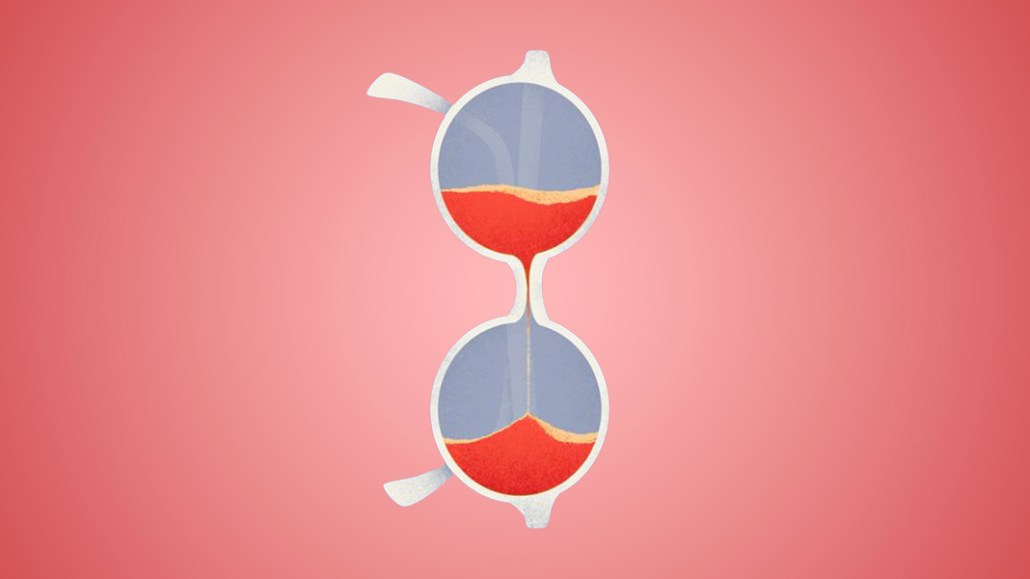
Publishers use all sorts of ploys to get flyby visitors to stick around, based on the belief that these casual readers are low value because they aren’t loyal and don’t view a lot of ads.
New research from digital analytics firm Parsely says that people who bounce, or leave a site, after one article are more valuable than they’re given credit for, though. The findings could call into question the way a lot of publishers approach one-and-done readers, which can account for 60 to 70 percent for the typical news publisher, according to the firm.
Parsely looked at 1.6 billion “bounced” visits to news and entertainment publishers in its network over a six-month period. It found that 32 percent of those visits lasted less than 15 seconds. But of the remaining 68 percent of the bounced visits, 77 percent stayed longer than 30 seconds.
Across all 1.6 billion sessions, the average engaged time spent was 56 seconds, rising to 81 seconds for the 68 percent of “good” visits. (As far as whether video was a factor, for the research, Parsely looked at text pages, which might have had a video embedded, so the presence of a video could have added to the time spent.)
“We get a lot of feedback from customers trying to understand this very nebulous term of engagement,” said Andrew Montalenti, co-founder and CTO of Parsely. “The question we’re trying to answer is, to what degree are people going to news sites and satisfied and to what degree is something else going on. Pageviews don’t tell you much about engagement, just what they’re reading. If a publisher is looking at pageviews and bounce rates, they are definitely measuring it all wrong.”
Montalenti also pointed out that the bounce rate metric is flawed because if a site is paginated, a single article visit can count as multiple pages. Also, a visit to a single article is counted as a bounce if the visitor came from social media but not if the visitor came directly to the publisher’s homepage. Instead of bounce rate, Parsely says publishers should look at people’s active time on site in 15-second increments, regardless of how many pages they looked at.
The reframing of bounced visits could be appealing to publishers who are getting their traffic from social side doors. Some, including Purch and Mic, use engagement metrics instead of pageviews to talk about their audiences.
“Bounce is all about getting that second pageview,” said David Stern, head of product at Slate. “That creates all kinds of perverse incentives to artificially drive up that metric. But that’s ultimately not the most important thing. I’d rather have someone stay two minutes on a single page versus one minute on multiple pages.”
The problem is that all publishers define engaged time differently, and depending on how they measure it, their own tallies can differ from what independent third parties say.
Historically, a high bounce rate was a signal that a publisher wasn’t reaching the right audience, and the pressure from advertisers for quality content is driving the use of engagement metrics, said Ben Kunz, evp of marketing and content at Mediassociates. But there’s a case for short visits. Some sites are utility-based and designed for short stays, so a high bounce rate could also indicate the visitor got what they wanted.
“Marketers and publishers need to realize people are busy for time,” he said. “They should challenge themselves to put as much content on one page and not try to force people to go five layers into your site. The UX is calling for that.”
More in Media

WTF is behind the explosion of faceless creators?
Brands are rapidly increasing their spending on faceless creators, showing the unique benefits of working with this type of influencer.

In Graphic Detail: As ‘Grow a Garden’ booms, a new report shows the marketing power of Roblox
The explosive growth of “Grow a Garden” has brought new attention to Roblox — and rejuvenated marketers’ interest in its advertising power.

Brand deals surge for golf creators as the sport’s popularity spikes
Golf is booming, and so is influencer marketing. As a result, golf creators are signing an unprecedented number of brand deals in 2025.





